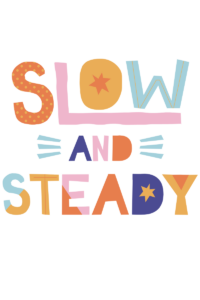Can We Take A Second To Rethink The Current Holiday Celebrations Happening In Schools?
So this week I’m going to write about a touchy subject. Reimaging what December could look like in our schools. And no, I’m not a grinch. Before you leave a comment all in a tizzy. I’m not trying to take away all the joy in the world. I’m not trying to take Christmas away. It’s not a war on Christmas. I simply want to reflect upon our current school traditions and if it’s fair to all students.
What December Looks Like In Schools
It’s about that time of year where many start putting up decorations and get their celebrating on. Teachers put up Christmas trees and Menorahs in their classrooms. And in the last few years, classes have incorporated Elf On A Shelf. There are coloring worksheets about Santa, reindeer, gifts, and so on. There are sing-alongs with holiday songs such as “We wish you a Merry Christmas.” Schools make December about these two religions or holidays as if they were the only two that existed in the world.
https://www.tolerance.org/magazine/problems-with-christmas-curriculum

Feeling Like An Outcast
Muslims, Hindus, Buddhists, and others do not celebrate the same holidays. Many children may feel singled out around this time of year. I raised my boys as Buddhists, and this time of year, like many others, brought a level of embarrassment for them. They felt as if they were different. I personally created a made-up holiday called “Kindness Day” around December. I felt I had to jump through hoops for my kids to feel included. So I made up a day where they could get gifts just like their classmates. I put up a Kindness Day tree so they could put up decorations. I took our beliefs and merged it with something else. In retrospect, I wish I didn’t conform for the sake of conforming.
It’s Not The Time For Excuses
Before writing this article, I dug deep into researching why some teachers felt the need to hold on to their December traditions.
Some mentioned: “Christmas is not a religion, so it can be included in school”. I don’t buy that. If Christmas is not religious, it’s definitely a cultural experience. So that leads me to this question “Are you then embracing everyone’s cultural experience?”. “Do you put in the time to celebrates everyone’s holidays?”.
Some mentioned: “It’s a winter celebration about joy and cheer.” If that is the case, why is there an elf hiding in a room waiting to report back to Santa? We are commercializing this figure as a bringer of gifts that many students will not receive.
Some mentioned: “A large population of the country celebrates it. Or all my students celebrate it”.
When a statement like “Well, we primarily have Christians here, so we don’t have to really focus on anything else.” To me, that’s the equivalent of saying, “Well, we primary have white students here, so we don’t have to focus on cultural awareness.” It’s an extremely bias point of view. So if we are only representing what we see, is that culturally relevant teaching? Is that a reason to exclude other forms of representation. Representation matters, no matter what your student population looks like. It shouldn’t matter if your school is not as diverse as others. There have to be multiple perspectives, regardless.
Becoming A Multicultural Educator
Using Literature to Learn about Children Around the World: A Thematic Approach to Cultural Awareness

An Inclusive Alternative
While we are overemphasizing some cultural celebrations, we are undervaluing other celebrations. It’s a narrow-minded view.
So how do we deal with December? Here are some alternatives.
We can make our classrooms more inclusive. Acknowledge the holidays that exist for others throughout the year. Put in the time to help our students see holidays outside of their own.
Not willing to do so? Want to keep the December celebrations going? Then instead emphasize the spirit of giving and charity. Not being good and getting presents.
I can’t say these are the best solutions, but they may be better than what we currently have in place.
Inclusive Resources
Celebrations Around The World: The Fabulous Celebrations You Won’t Want To Miss
What Do You Celebrate? Holidays and Festivals Around The World
Holidays Around The World (Adventures In Culture)
Let’s Celebrate! Special Days Around The World
Every Month Is A New Year: Celebrations Around The World
Want to check out more?
MEMBERSHIP SITE:
https://zennedmath.com/online-courses/
FACEBOOK GROUP: Zenned Math Teachers
https://www.facebook.com/groups/zennedmathteachers/
YOUTUBE CHANNEL: Zenned Math
https://www.youtube.com/channel/UC5njH_5LoK6G67BvZecGfnw?
WANT ME IN YOUR INBOX? Sign up for my newsletter
https://view.flodesk.com/pages/5efc876dcaabca0028b95eb5
DISCLAIMER: Some links included in this blog might be affiliate links. If you purchase a product or service with the links that I provide, I may receive a small commission. There is no additional charge to you!

